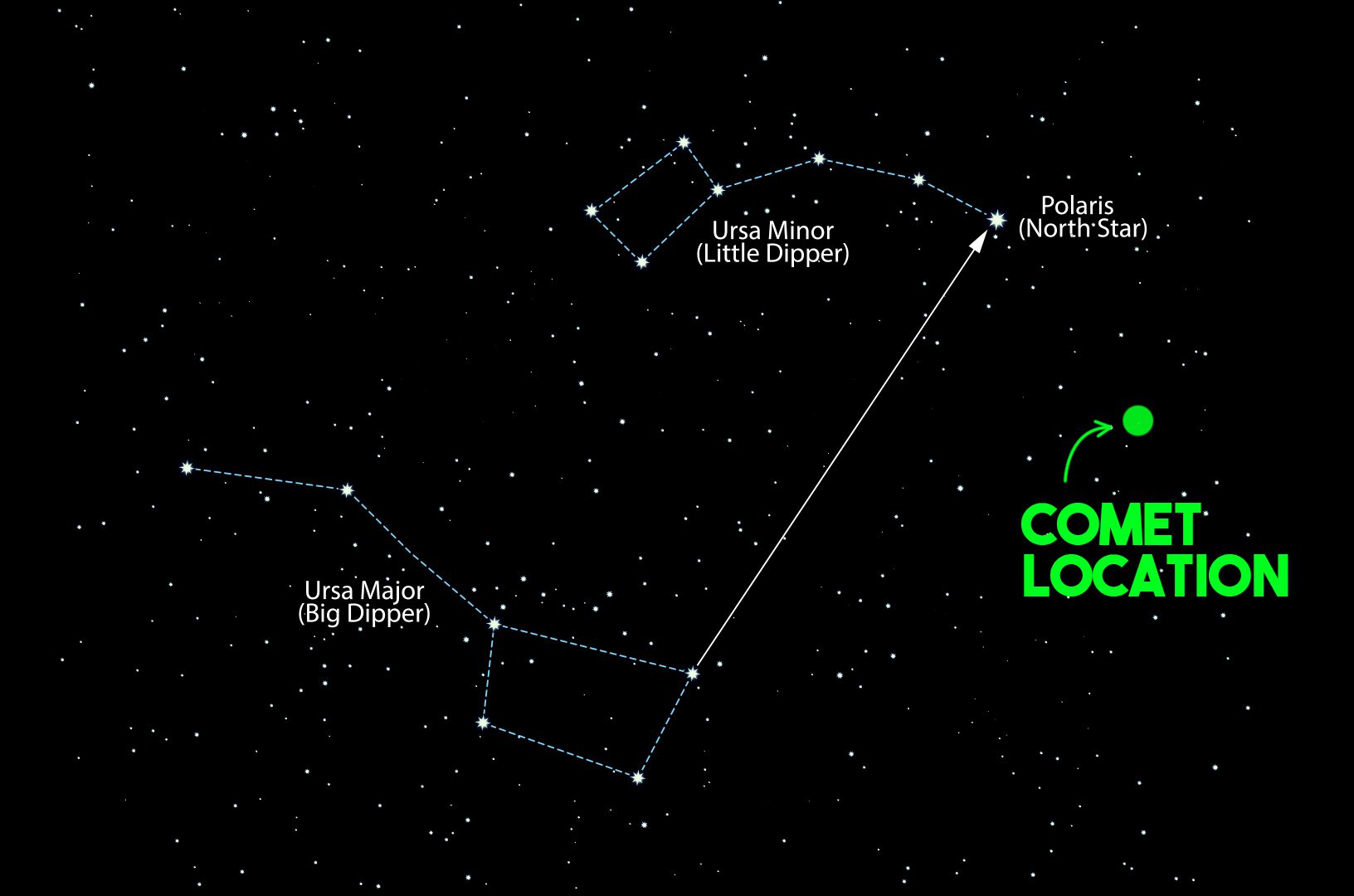Look up! The green comet C/2022 E3 (ZTF) is almost at its closest point to Earth. Tomorrow, February 1, the comet will be only about 42 million kilometers (26 million miles) from our planet. Many around the world have already spotted the object as it passes across the northern sky. Since last week, when it first became visible to the naked eye, it has brightened even more which makes it even easier to spot.
If you have a clear sky, you can use a compass or your phone (give your eyes time to readjust to the darkness) or even the stars to find north. Just look for the Big Dipper and find the two stars at the end of it, away from the handle. If you imagine a line going from those two stars upwards, you’ll find Polaris, the North Star, the brightest star in the constellation of Ursa Minor, or the Little Dipper as it’s known.

Find Polaris and look for the comet, that’s the approcimate location on January 31. Image Credit: IFLScience/ Vector FX/Shutterstock
The comet is located only a little bit further from Polaris, higher in the sky, in the constellation of Camelopardalis (the Giraffe). The Little Dipper also helps you work out if you can see the comet with the naked eye from your location or, given the brightness of the sky, if you’ll need the help of binoculars or a small telescope. If you can see all seven stars in the Little Dipper you are in luck and you have a nice dark sky (something that is going to be rarer and rarer).
The last time this comet was visible, Neanderthals were still roaming the planet with our ancestors. In the intervening 50,000 years, a lot has changed, including the invention of binoculars, telescopes, and cameras to catch this cosmic object on its journey. The comet is in a weakly hyperbolic orbit. This means that it should come again to visit us but it is possible the giant planets of the Solar System may give it a boost and send it away from the Sun never to return.
Source Link: Green Comet Set To Make Closest Pass To Earth In 50,000 Years Tomorrow